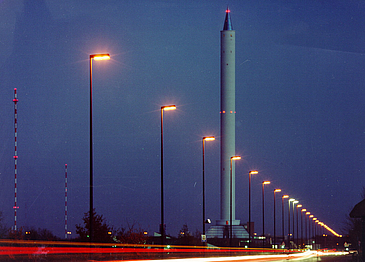A series of experiments in the drop-tower at the University of Bremen has led to ground-breaking findings with regard to the development of low-emission combustion processes. Working in cooperation with partners from the Institute of Photonic Technology, Jena, and the Institut für Strahlwerkzeuge at the University of Stuttgart, research scientists at the Centre of Applied Space Technology and Microgravity (ZARM) have for the first time been able to investigate the self-ignition of single fuel droplets. This was made possible with the aid of sophisticated laser diagnostics. Thanks to the amazingly sharp detail of the newly gained information, the researchers believe they will now be able to develop strategies to significantly reduce the formation of ecologically harmful emissions during a combustion process.
This really does represent a milestone in combustion research under microgravity conditions. “Now, much better than before, we are able to identify and describe the processes involved when droplets ignite in extremely hot environments. This information is particularly useful in helping to understand how fuel spray ignites, and will very soon lead to the development of particularly low-emission combustion processes in engines, power stations and gas-turbine aircraft engines”, says ChristianEigenbrod, who leads the research unit for combustion technology at ZARM.
The drop-tower experiments provide answers in extremely fine detail to essential research questions: How do fuel droplets vaporize? How, when, and where in the combustion environment do pre-reactions occur which lead to the formation of formaldehyde? When and why do these pre-reactions result in the ignition of a visible flame? This information is needed in order to design combustion engines in which self-ignition doesn’t occur until the fuel spray is completely vaporized and uniformly mixed with the air in the combustion chamber. No small engineering challenge ? but a decisive prerequisite for a combustion process with the lowest emission levels of harmful and climate-relevant nitrogen oxides like nitrogen monoxide, nitrogen dioxide, and nitrous oxide. The latter substance makes the largest contribution of all combustion products to the greenhouse effect. Although compared to carbon dioxide its absolute share is small, its greenhouse potential is some twenty times higher than that of CO2.
The research team is already looking forward to the next step: the further development of this diagnosis system for application on the international space station.
You can find more information on the homepage of ZARM.

